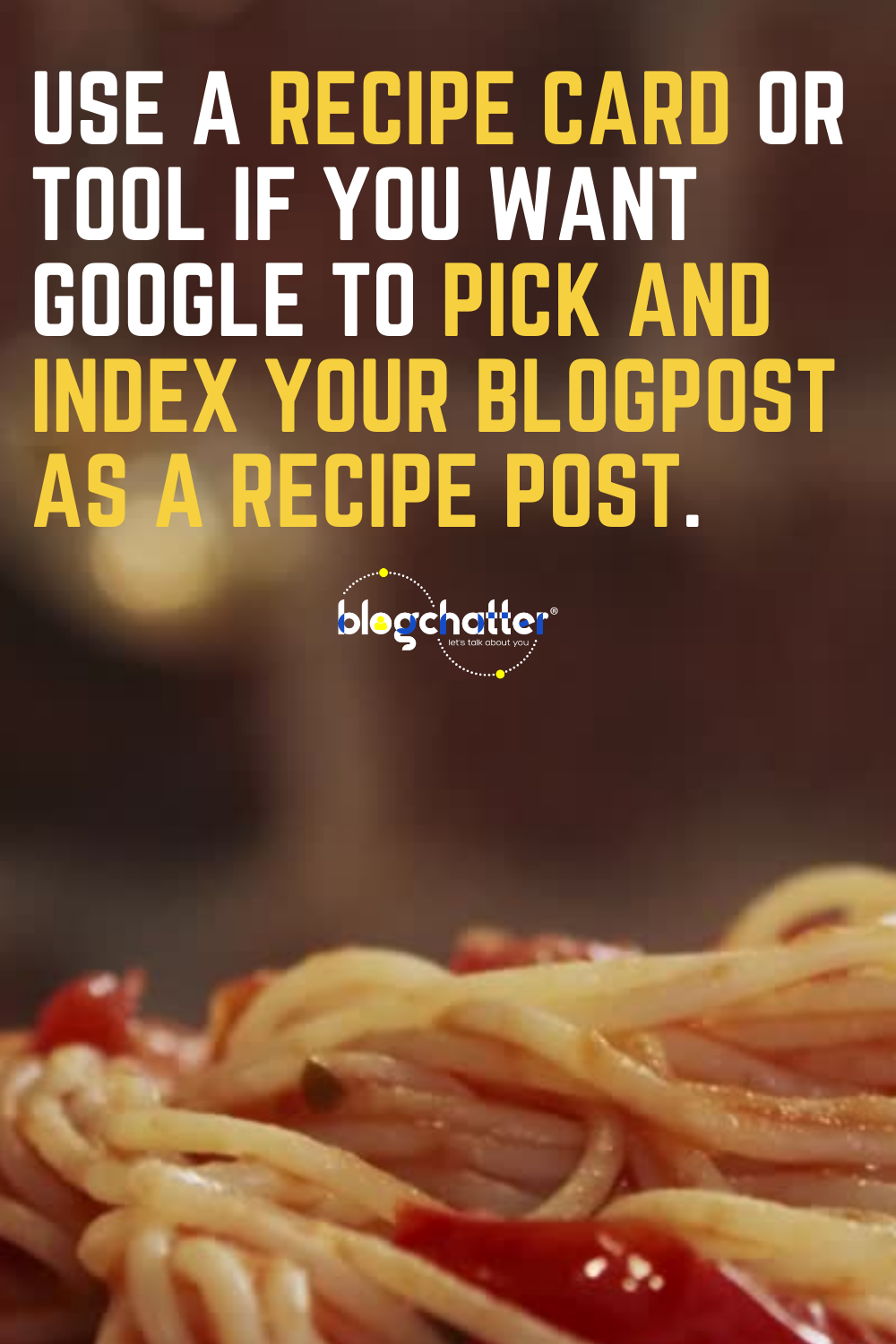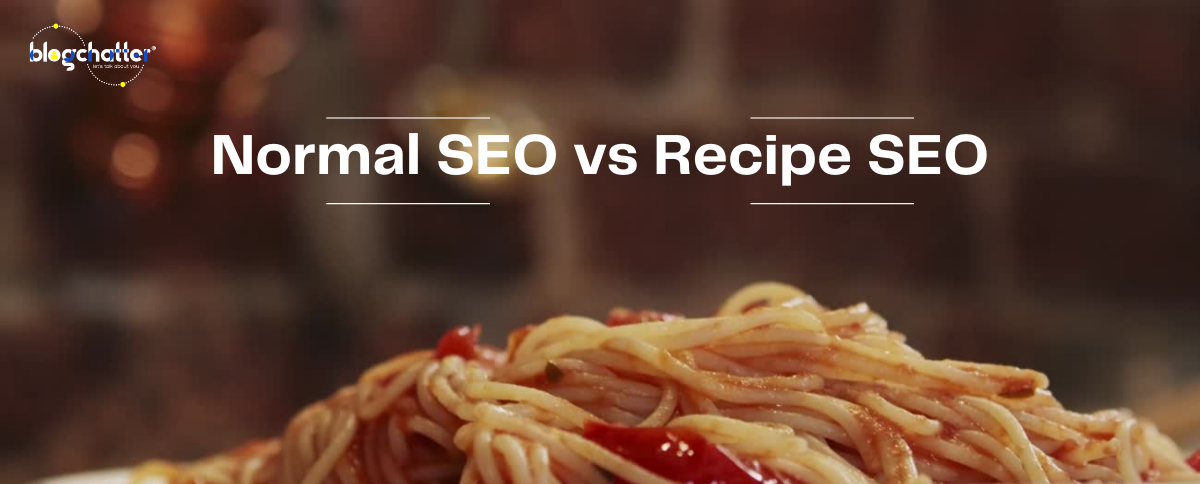The glamor of food blogging has been alluringly rerouted to the more recent media, like YouTube, IGTV & now Instagram Reels. But does that spell the end of the classic way of food blogging?
From the get go, I want to admit that food blogging was not part of my plans at all. I started FITBEWELL as a fitness & health blog where I would write about topics surrounding them and help inspire my readers to adopt tiny steps to change their lifestyle for the better. Food wasn't an element of this.
However, when I published my first ever recipe of the Goan Mango curry in July 2018, I noticed a sudden surge in my blog traffic. For a relatively less visible blog, that was something.
I did a recipe post not on a whim, but as an extension to the idea that when we talk about health & fitness, how can we leave food out of it? What prompted me to post it was a feeling that there would be people looking for an otherwise traditional recipe that included a tasty blend of spices with no ingredients that could be dubbed as 'unhealthy'. It was also a vegan & gluten-free recipe suited for the season.
Food blogging is an extremely competitive niche. That's because a majority of popular recipes are almost the same. And since most of the bloggers today consider investing in superior photography tools, the amount of visual appeal can actually topple your chances of getting noticed from Google search. So, how do you make your recipe stand out to reach your target audience?
Here are some key aspects of SEO for food bloggers that help in spiking your odds of ranking well on Google.
Normal SEO vs Recipe SEO
A large part of SEO, in general, revolves around keywords. Optimising your blog post for a particular set of keywords or its synonyms is something that most of us aim for.
So, how different is SEO for food bloggers?
I'd say, first identify the section of audience you want to share your recipes with. Work accordingly. Aim for a wider reach through Google search, but pick your keywords for a narrower spectrum of competition. That makes it easier for you to reach the exact set of audience you're tailoring your recipes for. In the meanwhile, you also have a chance to get noticed by the rest of the audience that searches for the more generically-phrased queries.

For instance, if you're posting a recipe to make Sweetcorn Nuggets, you would want to research how it's being searched for on Google, rather than just styling your H1 Title like, "How to make Sweetcorn Nuggets at home" or "Homemade Sweetcorn Recipe".
I highly recommend any of the two FREE Keyword Research tools:
- Google Search Console (GSC)
- Ubersuggest
You ideally design your title & Yoast Keyword/Keyphrase after studying the following 2 parameters:
- Search Volume &,
- Competition level / SEO difficulty (basis what GSC or Ubersuggest refer to it)
- Titles & meta-descriptions of potential competitors' posts that appear when you type the same phrase as Google query.
Therefore, if you craft your H1 Title & meta-description including the most favorable keyword/phrase based on what your recipe contains, you're working towards a better recipe SEO.
Identify your recipe's USP
Most of the popular recipes being similar or exactly the same, and you never can 'own' a recipe in the literal sense.
But, what separates you from the other recipes is how differently you make that food, and present it too. Nah, I'm not talking about the plating & the actual food-porn part!
Considering the aforementioned example, how would you make sure that your sweetcorn nuggets are not the same as the nuggets of your competitors?

Use this.
How different your recipe is from most of the #1 page SERP rankers, defines your USP. Incorporate this within 2 or 3 words in your title or description. Or both. Be careful about not over-using the phrase. Prefer to go with variations or synonyms of the keyphrase instead, when repeating it. Don't worry, during indexing, this is picked up as effectively as the exact combination of keywords.
Voice search optimization
Imagine how your potential visitors would look for a super quick main course or salad recipe for tonight's dinner. They're more likely to voice-command something like, "How to make tasty pasta in 15 minutes", or "Instant Raita receipes", or "Quick Matar-paneer recipe without cream" on Google.
What I have studied from my recipes that have been doing well on Page 1 of Google search results, is that almost all of these have a URL pattern that's likened to a typical voice-command sentence. Of course, you need not include stop words like "a", "the" or "which" etc though.
For example, my recipe of making Instant raw mango pickle made use of minimal oil in comparison to the regular way of making it. Likewise, you would find it ranking well for search phrases that include words like, "without oil" & "less oil". It's also interesting to note that although I included the "aam ka achar" phrase in the second half of the title, it ranks on Page 1 for the same phrase & not for "raw mango pickle". This supports the probability of more Indian users searching for it, as they know it with, than the non-Indian audience.

Also note the choice I went with in formulating my URL. It is relatively more voice search-friendly than something like, "instant-mango-pickle-recipe".
Likewise, it's interesting to see that it appears in Rich Snippets for the queries mentioned above. If your recipe appears in the Featured snippets, this improves your CTR.
Use recipe cards/tools for your blog post
Back when I published the Mango curry recipe, I had written it like any other blog post, albeit with indented lines & tables of ingredients. It wasn't structured to come across as a recipe post for web crawlers. However, I saw it ranked as the 1st result of the 2nd page of SERPs; not on the 1st page.
Hence, I learnt that using a Recipe Card or tool was necessary. This is important aspect of SEO for food bloggers, for your post to be picked up & indexed as a recipe post.
Recipe cards give the user a bird-eye view of all that's needed, much before they click on your post to view it.
The best part about recipe cards is that, your audience usually gets to rate your recipe, which indicates Google that your recipe is probably 'liked'. It also fairly gives an impression about how shareable it's getting across social media.
I swear by WP Recipe Maker. Some of my other friends also find Tasty Pins working great for them.

Do not skip the jump to recipe tab!
Every blogger invests legit efforts in crafting his/her recipe articles. So bloggers obviously aim to write long-form content that easily spans between 800-1500 words, which is considered as a sign of cornerstone SEO content. But, honestly, are your readers really rooting to read all that you write? NO. Most of the time, all they want from you is the recipe. Give it to them!
In other words, make it easy for them to get it & leave ASAP, if that's what they want.
What SEO experts always emphasize on is, user intent.
So, what you're doing to make your reader's life easy in grasping your recipe is what tells Google about how good and uncomplicated it is.
If your reader is able to directly head towards the recipe by clicking on the JUMP TO RECIPE tab, it actually signals Google that you prioritize user-intent. The ease of navigation may even prompt the reader to bookmark or save the recipe for later.
I know, most of us heavily depend on ad revenue & we, therefore, love low bounce rates. But having to indefinitely scroll down to get to the recipe can turn your audience off.
Never miss revealing the process
Not every recipe-hunter has the patience or the time to read through each line of your recipe, no matter how clear it is.
Our basic instinct is to save time & get the most out of it. People prefer visual comprehension over reading recipes or tutorials of any kind. Step-by-step images or clips have a greater recall value too. They're easy to remember in case they're not comfortable noting down your recipe or placing the phone somewhere on the counter while cooking.
When I published my first recipe, I did not post step-by-step pictures. Over weeks, I deduced the following advantages about posting step-by-step images of the recipe:
- Makes it easy for the reader to remember & understand without having to read all of your post.
- Helps the audience to trust you, that you care to make things not just simple for them, but also build a confidence that it is not likely to be a plagiarized recipe (this is, unfortunately, one of the black-hat techniques that some bloggers try. A lot of final recipe images get lifted from Google & Pinterest, & even their watermarks edited out to claim as something that they 'made').
- Leaves you with enough scope to strategically place your keywords in the ALT tags for the step-by-step images too.
All of these play a vital role in pushing your recipe article up the Google search results.
Image compression
Food blogging is an image-indulgent niche. High definition images of food are not just attractive, but also set you apart from your competitors. Like it or not, but it creates a subconscious impression about you & your style of cooking & presentation. Images silently speak your thoughts out about that food & your desire to connect with the reader.
Having said that, let me also tell you that I'm still walking my baby steps in the photography department & I purchased the DSLR just last year. Yet, I had many of my recipe posts ranking on Page 1 of Google SERPs much before; most of the images being clicked from my phone.
Always use image compression plugins for your site. Images with resolution greater than 4 or 5 MB each can horribly slow your site's loading speed & repel your audience. I use Shortpixel & it works great for my blogging frequency.
At the same time, work on increasing your page-loading speed. Delete unused plugins & clear cache. W3 Total Cache is a good resource, by the way.
Embedding related content: mandatory SEO for food bloggers?
While the classic way of interlinking related posts or recipes is gold, embedding relevant videos/media from other social media into the recipe post always has its perks. Whether it's about increasing dwell time (lower bounce rate) & encouraging organic engagement of the audience.
The best way to increase such engagement is to embed YouTube videos into the recipe post. It could be the same recipe video from your YouTube channel. This way, you'd be empowering the visitor to watch & learn the recipe quickly.
What's more, this also improves your chances of getting your video to appear in the Featured video snippets of Google search!
Leveraging Pinterest SEO for food bloggers
Well, this is the most fun & interesting aspect of food blogging. Pinterest can be a gold mine for your food blogs if you study some basics of Pinterest SEO.
This primarily includes searching for phrases related to your recipe on Pinterest. Observe what the most pinned images of the recipe have in their:
- Pin description
- Title
- Hashtags included
- Group boards that they're most pinned to (gives you a closer look at your possibility of joining them)
What happens when your recipe pin is doing well on Pinterest?
According to my experience, it doesn't matter much if your pin is being pinned multiple times or having many impressions. What helps you is the CTR (click-through-rate). If you have many people flocking to your post from Pinterest, it tells you that they felt enticed to learn the recipe from your blog for some reason.
Again, this works wonderfully if you are using a recipe plugin for your blog, which directly picks attributes of the ingredients, cooking time & rating & displays alongside your pin on Pinterest. That gives a lot of quick information to your visitor from Pinterest to decide whether it's worth clicking on or not.
Miscellaneous SEO tips for food bloggers
Besides all of these, never forget to:
- Use original images
- Write for more than 500 words
- Don’t overstuff keywords
- Use a catchy & unique H1 Title
- Answer possible FAQs about your recipe. Example, how to replace a certain ingredient to make a gluten-free version, what if a batter becomes thin, how to balance an overcooked dish, etc.
- Use ALT tags judiciously
- Make sure that your website theme is responsive
- Have compatible share buttons for your post.
I shall perennially be a learner. However, I'd want to share from whatever I have intuited so far that SEO for food bloggers. After all, food connects the audience much better with the blogger's soul. Likewise, SEO for food bloggers should be fun & exciting to pave their path to the reader's stomach!







Comments
Happy to read a lot of new information.
What a brilliant post, Ashvini! It does appear a lot to take in but I do hope I get a hang of it, sooner or later! Thank you for your wonderful tips!
Thanks, Charmila. Glad you found it useful!
Such a well written article with loads of information. Thank you so much for this.